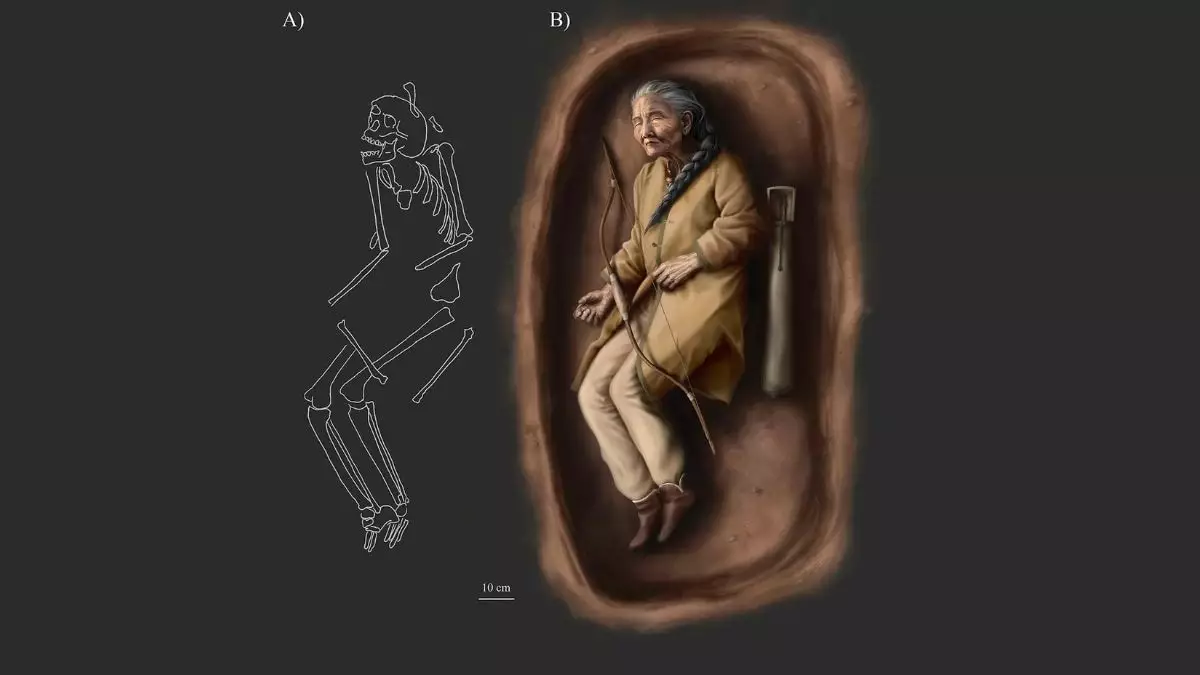Recent archaeological work in the Carpathian Basin of Hungary has unveiled a groundbreaking find: the first confirmed instance of a female burial adorned with weaponry from the 10th century. Unearthed at the Sárréttudvari-Hizóföld cemetery, the remains and associated grave goods have piqued the interest of historians and archaeologists alike, prompting a reevaluation of traditional gender roles during the Hungarian Conquest period. This era was characterized by tumultuous conflicts and the mobility of mounted archers, yet this revelation suggests a more nuanced social landscape than previously presumed.
Grave Goods and Their Implications
The burial of an individual identified as SH-63 has drawn particular attention due to its unique assemblage of items. Amongst the grave goods were advanced archery artifacts, including an arrowhead and components of a quiver, alongside traditionally feminine items like a silver penannular hair ring and a bead necklace. This amalgamation of items raises intriguing questions about SH-63’s identity and the roles associated with her gender. The research team, led by Dr. Balázs Tihanyi, published their findings in the peer-reviewed journal PLOS ONE, emphasizing the careful methodology used in their analysis.
Despite the presence of weaponry, the researchers exercised caution in drawing conclusions regarding SH-63’s status. Dr. Tihanyi pointed out that the mere inclusion of weapons does not automatically infer that the individual occupied a warrior role. The societal implications of being a warrior involved specific responsibilities and achievements, which must be defined beyond the physical evidence uncovered.
An in-depth investigation into the skeletal remains revealed signs that might suggest experience in horseback riding or the handling of weapons. However, researchers were quick to note that these physical attributes could just as easily stem from everyday activities, distinguishing them from evidence of militaristic training. This critical distinction highlights the complex tapestry of life in 10th-century Hungary, where warfare and daily existence may have intertwined in ways not solely defined by societal roles.
Furthermore, this finding opens a dialogue about gender dynamics during this historical period. It suggests that women, like SH-63, might have engaged in activities that transcended traditional boundaries, prompting scholars to reconsider norms surrounding femininity and militaristic prowess of that time. The combination of items found in the burial reveals not only the individual’s unique life experience but also an intricacy in societal expectations regarding gender.
The SH-63 burial serves as a pivotal case in the study of 10th-century Hungary. It invites further archaeological investigations to explore additional burials from the same period to draw comparisons and enhance understanding of community structures, gender roles, and the influence of warfare on social identity. This discovery is not just an isolated phenomenon but rather a key to unraveling the complex interplay of life, tradition, and societal organization in a bygone era. As research continues, the legacy of SH-63 can serve as a catalyst for broader discussions about women’s roles in history, shedding light on a past that is often overlooked yet fundamentally important.


Leave a Reply